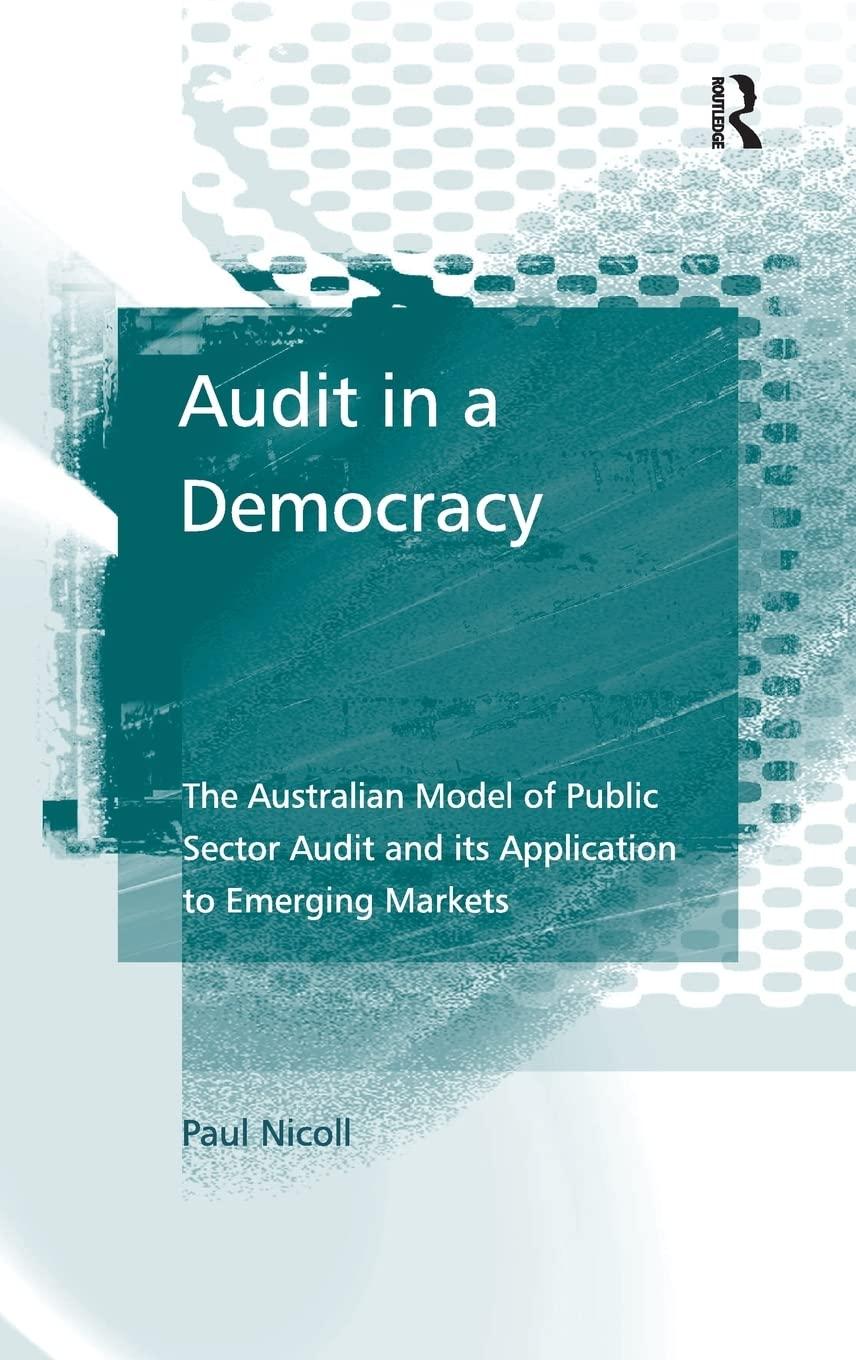Question
Identifying and Analyzing Financial Statement Effects of Share-Based Compensation Weaver Industries implements a new share-based compensation plan in 2014. Under the plan, the company's CEO
Identifying and Analyzing Financial Statement Effects of Share-Based Compensation Weaver Industries implements a new share-based compensation plan in 2014. Under the plan, the company's CEO and CFO each will receive non-qualified stock options to purchase 100,000, no par shares. The options vest ratably (1/3 of the options each year) over three years, expire in 10 years and have an exercise (strike) price of $27 per share. Weaver uses the Black-Scholes model to estimate a fair-value per option of $18. (a) Use the financial statement effects template to record the compensation expense related to these options for each year 2014 through 2016.
Use negative signs with answers, when appropriate.
| Balance Sheet | ||||||||||
|---|---|---|---|---|---|---|---|---|---|---|
| Transaction | Cash Asset | + | Noncash Assets | = | Liabilities | + | Contributed Capital | + | Earned Capital | |
| Compensation expense recorded each year | Answer
| Answer
| Answer
| Answer
| Answer
| |||||
| Income Statement | |||||
|---|---|---|---|---|---|
| Revenue | - | Expenses | = | Net Income | |
| Answer
| Answer
| Answer
| |||
(b) In 2017, the company's stock price is $24. If you were the Weaver Industries CEO, would you exercise your options? Explain.
Step by Step Solution
There are 3 Steps involved in it
Step: 1

Get Instant Access to Expert-Tailored Solutions
See step-by-step solutions with expert insights and AI powered tools for academic success
Step: 2

Step: 3

Ace Your Homework with AI
Get the answers you need in no time with our AI-driven, step-by-step assistance
Get Started


